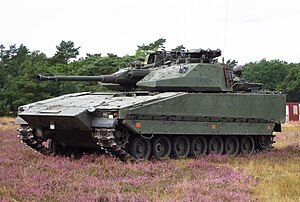I argue that if a hypothetical ceasefire seemed inevitable, Russia should not be the main focus of Ukraine’s negotiating strategy, not even the second focus!
Really? One would think that the primary combatant should be the main focus of a ceasefire strategy. In this particular scenario I think not. The primary focus for Ukraine should be on her allies. Yes, potentially one of the biggest risks of a ceasefire is losing support during the ceasefire. So don’t. As part of negotiations leading up to a hypothetical armistice, negotiate equipment and material support commitments from allies. The idea is that Ukraine must become stronger in a ceasefire, otherwise Russia will simply rearm and attack. Politically, it may have legs, in my opinion, and Ukraine should extend any hypothetical ceasefire negotiations as long as practical, specifically to get the military support built up as ironclad as possible. Discussions have mentioned necessary equipment and materiel for another 15 brigades or so. Set that as the target for public negotiations, but don’t settle for anything less than 5-7 brigades worth. It is best to make this arrangement as much like a formal agreement as possible, so that it is as binding as possible (conditions for an armistice, allies are essentially party to the armistice negotiations). However, the necessary support is not only material, financial support and infrastructure repair must be included. While mostly civilian and humanitarian, even ideal for civil servant salaries, this frees up money that Ukraine can spend on defensive infrastructure, including hardening the infrastructure against attack.
So how does Russia not even become the second focus? This is because the second most important focus must be on the Ukrainian people themselves. Hands must be busy during any hypothetical ceasefire preparing for resumption of hostilities, repairing and fortifying around Ukraine, recruiting and training new units, and related logistics support preparations. In my opinion, this plan needs to be pretty solid and pretty full to keep citizens focused and try to weed out groups that spawn defeatist discussions or forums. Busy hands and focused war support.
Ok now we come to the Russians and here the negotiations don’t have to be complex, I don’t think a 30 day ceasefire with the potential to renew another 30 days that is set up to look like it could potentially continue to be extended, if things go as both parties agree. If Ukraine makes the first steps of solid plans to equip and form new brigades as much as possible in advance, the ceasefire could be shorter, perhaps even just the 30 days. Brigades certainly cannot be formed at that time, but as long as the equipment was already in transit even before the armistice was implemented and the material is secured at the end of the armistice period, the brigades can finish forming after the resumption of fighting. The key is that the ceasefire is used to actually get the material needed to form new brigades.
But time may not be on Russia’s side. Why? Russian combat power currently appears to be heavily dependent on highly abusive command and control mechanisms. Severe beatings, rape, torture, limited nutrition, terrible living conditions, barrier troops that are also the source of much of the abuse, all of these can be harder to sustain when the struggle is not active. I suspect the desertion rate and sabotage would increase significantly in a ceasefire, potentially leading to the need to dismantle some of these abusive policies, potentially even needing a crackdown on abusive officers, as desertion, insubordination and sabotage became big enough problems. I personally believe that Russian combat power will deteriorate.
Russian combat power will regain something in the form of building refurbished old lousy equipment from stock, artillery, drones and the like. I think the loss of troop power will be worse than the gain, but that’s more faith than anything else. I also suspect that both sides will continue reconstructive drone efforts, and the Russians could be hit hard by this equipment with resumption of fighting, especially if Ukraine knows when this will be (ie, directly or through provocation, ending the ceasefire with foreknowledge). ).
If a cease-fire were to occur, either by Ukraine’s choice or circumstances pushing them in that direction, then some strategic planning and execution could make the cease-fire part of a winning strategy versus a dreaded waiting game of being victimized by Russia controls the narrative.
Slava Ukraine!!!
